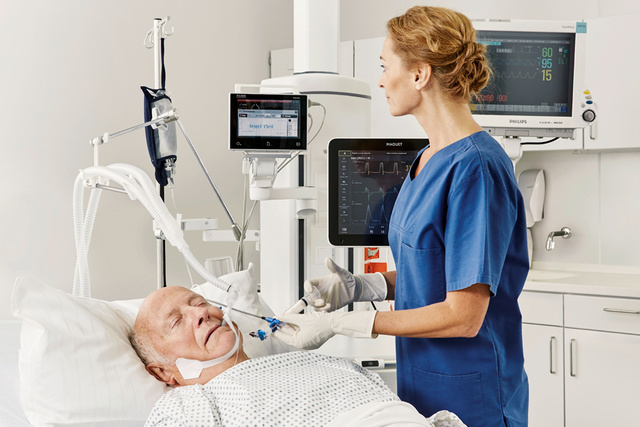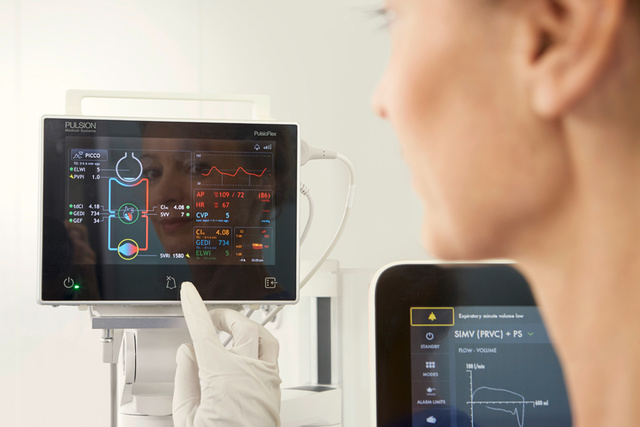Advanced Patient Monitoring
Get the full hemodynamic picture

Understand complex hemodynamic conditions
The life of your critically ill patient depends on the right decision for the next therapeutic step. Therapeutic conflicts often arise at the critical care bedside, where you need dependable information you can trust. A set of reliable hemodynamic parameters can help determine the best individual treatment for your patients.[1]
Hemodynamic questions to ask
Monitoring does not lower patient mortality or morbidity, per se - however, it provides valuable information that should be used to set up a treatment plan and apply individualized goal-directed therapy to the patient as early as possible. In order to ensure a broad foundation of information, a range of parameters can be provided and used as a basis for therapy decisions.

Individualize therapy strategies
Intensive care patients often come along with an unstable hemodynamic condition. Unclear volume status and therapeutic conflicts, makes it harder to implement an appropriate therapy strategy: Volume expansion? Vasopressor use or inotropic support?
Sufficient organ perfusion and optimal tissue oxygenation are of great importance. Simultaneously, it is essential to avoid volume overload, which can result in pulmonary edema and interrupted gas exchange.
Advanced hemodynamic monitoring has, therefore, a vital role in the implementation of life-saving therapeutic strategies. [2]
Careful management of cardiac output and it’s determinants can guide physicians through the resuscitative process of critically ill patients. Adapting individualized hemodynamic monitoring protocols leads to optimized therapeutic interventions and has the potential to improve outcomes.[3]

Assess your patients' full hemodynamic picture
Monitoring the cardiocirculatory function is of great importance in intensive care patients. PiCCO allows for minimally invasive measurement of hemodynamic parameters like cardiac output, and its determinants: Preload, Afterload, and Contractility. Furthermore, the ELWI parameter allows a sensitive assessment of extravascular lung water. This set of reliable hemodynamic parameters can help determine the best individual treatment for critically ill patients.

Identify your patients' risk level continuously
A summary of hemodynamic parameters at a glance, as well as the interaction of threshold values, enables immediate and targeted adjustment of treatment. Being continuously updated on any changes in the patient’s hemodynamic condition helps to adjust therapy strategies tailored to each patient.
Explore our products
Find the right products and solutions for you